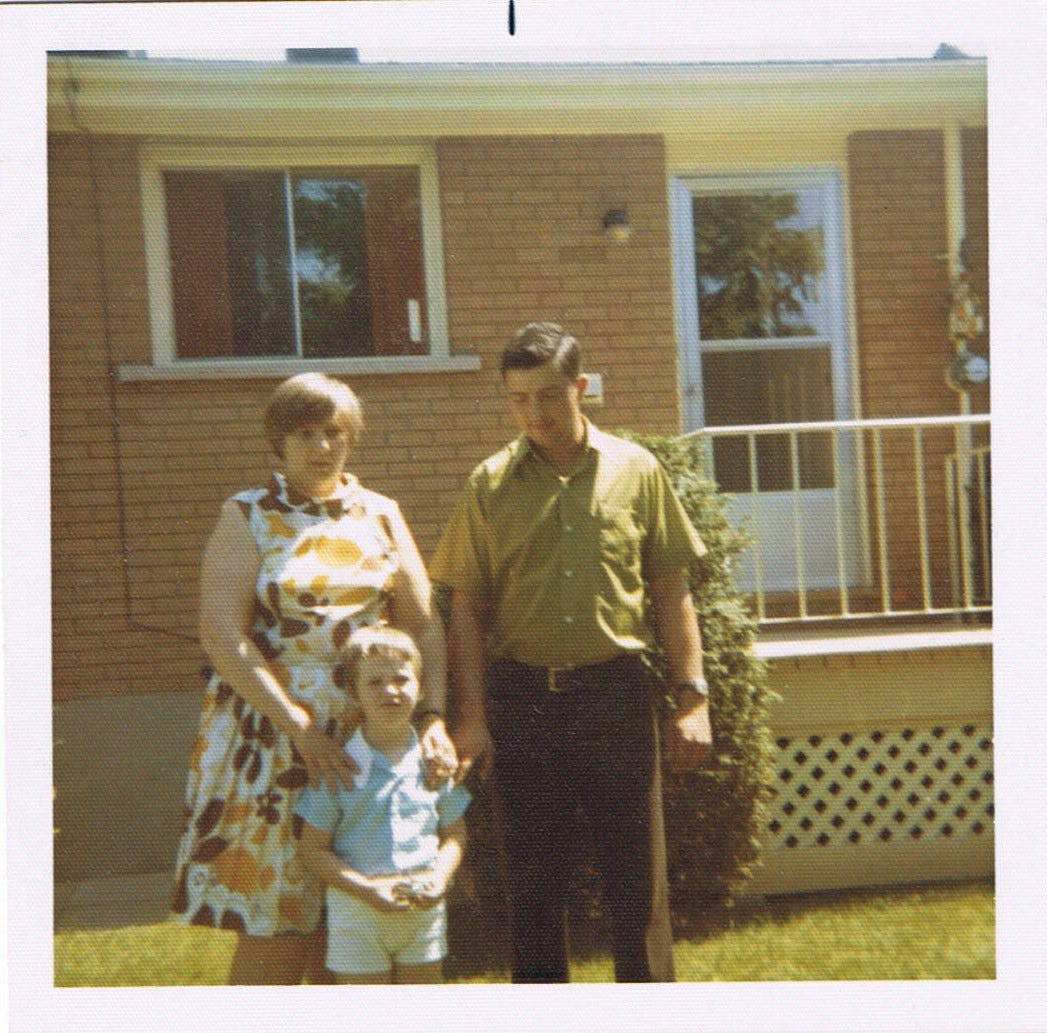There is a Jeanette Winterson quote about adopted people being largely self-creation, and I think I understand it better now than when I first encountered it in her memoir, Why Be Happy When You Could Be Normal? (2011). As she wrote:
Adopted children are self-invented because we have to be; there is an absence, a void, a question mark at the very beginning of our lives. A crucial part of our story is gone, and violently, like a bomb in the womb.
Self-creation. Perhaps I am, that. I know what I received from my parents, the ones who raised me and I would call nothing other than my parents. My mother’s temperament, my father’s work ethic and community tethers. But I know, also, the parts of me that remained separate, different. Social, loud. Exuberant, and in all directions. The me that was me-beyond-them, and knowing I couldn’t be like them if I tried. What I had not yet discovered as threads passed through genetics. Who am I, really? Like a bomb in the womb.
This distance from family may have allowed the comfort, possibly the confidence, for me to become myself, although that seems a bit of a fiction, now that I’ve encountered birth relatives. Whatever curious blend I am, amid such distinct groupings, and this separation I have always felt, beyond family, partners, children. The separation of being always held me apart from everyone else. I am myself, but I always singular.
Ever on the outside, looking in. Perhaps everyone feels this.
Still. My mother, my father. They might not be blood but they are of my body. My thinking. The way I move, or approach things. The ways in which I carry myself.
This matters, this. This matters.
As part of the 2018 CBC documentary I Think You’ve Been Looking For Me, there is the fortysomething self-described “former lost child” who refers to himself as feeling complete since re-connecting with birth mother. I only caught this documentary recently, realizing through the process that he and I roughly the same age. At fifty-something, most of my considerations of completeness or incompleteness I considered long settled, although there are moments since connecting with the people and information around my biological families that have rumbled at my foundations. Shaken, if you will. There were parts I was unaware of, parts that I hadn’t yet found. Am I splitting hairs?
I never felt as though the fact of myself as an adopted person provided me with an untethering, but instead, the knowledge that I had two sets of parents: mine, who picked me out of some kind of baby line-up or lottery via Children’s Aid in Cornwall (or however that process works), and a further set of parents, on the biological side. Growing up, I considered that I simply wasn’t aware of the details of this second pair, but even their absence sat as a particular presence. I knew I had four lines of direct influence, unlike everyone else, who had only the two. My stories, my foundations, were a bit more complex.
There were secrets here, ones that had not yet been told. Ones I had to seek out.
There is a scene I composed as part of my first novel, white (2007), as the main character attempts to strip away her mother’s image from her face in the mirror, so that she might be able to catch a glimpse of her absent father. “When P was seventeen,” the passage writes, “she compared a photograph of her mother to her own face in the bathroom mirror, searching out the differences. Those, she decided, would be the parts that belonged to her father.”
I had no such opportunity: when I looked in the mirror, I saw only myself.
I once asked my mother: Who do I take most after? I might have been around ten years old. Oh, she answered, you were always yourself.
Even at the time, I understood the clarity, the compliment, of her response, but it struck as deflection. It made me wonder if she saw me at all, or could see what I saw. How I was so clearly connected to both of their influences, examples. How I could have emerged from no other household but theirs.




